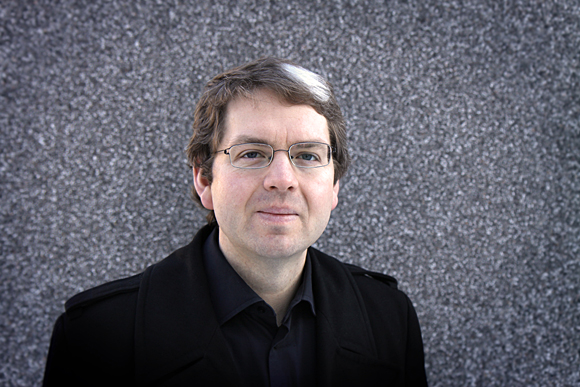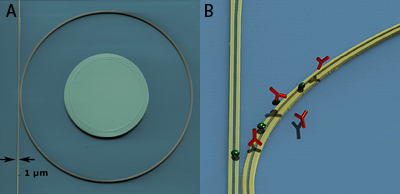Research Looks to Cut Drug Development Costs
NEWS
The pharmaceutical industry is facing a financial meltdown. The cost of bringing new drugs to market has doubled over the last 15 years, and in 2010 the total bill for medical research in the U.S. and Europe reached a staggering $70 billion. At the same time, fewer new drugs are reaching consumers. Now three KTH researchers are working feverishly to lower the cost of developing new medicines — with a sensor no bigger than a single cell.

“Over time, our research will hopefully lead not only to more new drugs becoming available, but also to cures for diseases that currently can’t be treated,” says Kristinn B. Gylfason, project manager and researcher in the Department of Microsystems Technology at KTH. Together with two colleagues, researcher Tommy Haraldsson and Professor Hjalmar Brismar in the Department of Applied Physics at KTH, Gylfason has received a grant of SEK 3.8 million ($564,000) from the Swedish Research Council to create a cell-sized sensor that may help the pharmaceutical industry speed release of new products.
And the drug companies could use some help. In 1995, pharmaceutical research spending in the U.S. and Europe reached about $30 billion. By 2010, that amount was up to $70 billion. During roughly the same time period — 1993 to 2007 — the number of applications to introduce new drugs on the market fell from 70 per year to 30.
“The pharmaceutical industry is facing a crisis,” Gylfason says. “The cost of each new drug is increasing while the number of introductions is only falling.”
One explanation for the increased costs is that many drug candidates that look promising after automated testing on pure proteins are found to have undesirable side effects when later tested on living cells. This is why researchers now strive to introduce testing on living cells as early possible in the development process, aiming to produce as much information as they can about the cells’ response. These goals require new methods for automated drug experiments on living cells.
That’s where Gylfason and his colleagues' research enters the picture. They have set out to develop a sensor no larger than a cell that can be placed in close proximity to the target where it can capture the molecules that cells secrete when exposed to drugs. The proximity between the cell and the sensor is important because the molecules spread rapidly into their surroundings, becoming difficult to register. The sensor's size and proximity to the cells is what is what makes the technology and method unique.

“If you expose a lot of cells to a drug in a test tube, you can only see the average response. By instead testing individual cells, the results become much more accurate. It allows us to provide drug developers with new and biologically relevant information for the selection of drug candidates at an early stage, and that speeds up the development of new drugs,” says Gylfason.
One field where the new sensor could quickly help facilitate drug development is kidney disease. But, says Gylfason, “The technology and methodology are so general that they can be applied to drugs for many diseases.”
By Peter Larsson
For more information: Kristinn B. Gylfason; +46-8-790-9231; kristinn.gylfason@ee.kth.se.

